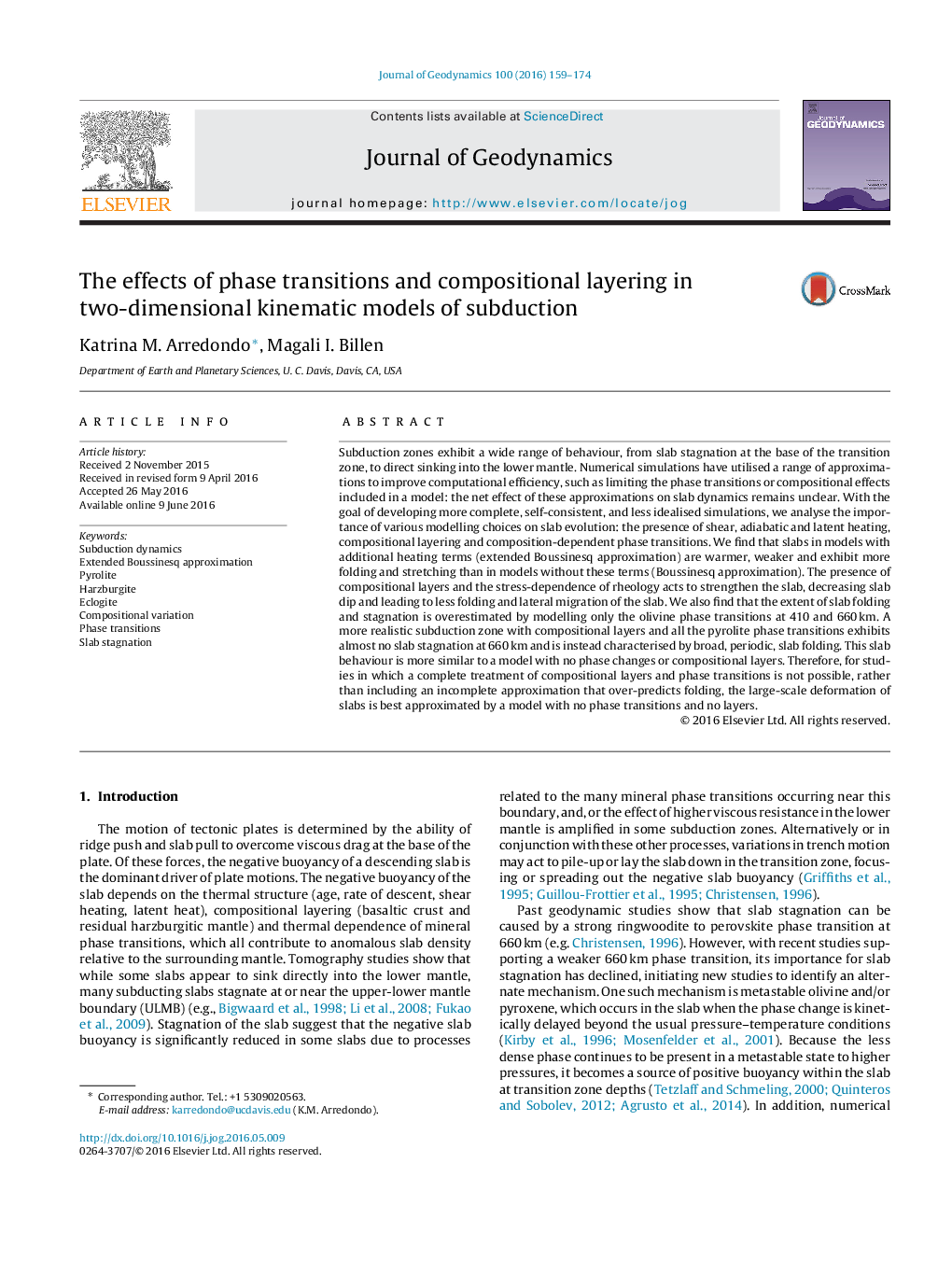| کد مقاله | کد نشریه | سال انتشار | مقاله انگلیسی | نسخه تمام متن |
|---|---|---|---|---|
| 6433076 | 1635750 | 2016 | 16 صفحه PDF | دانلود رایگان |
- Many published models severely overestimate slab stagnation.
- A model with pyrolite phase transitions has less slab stagnation and broader folds.
- Compositional layers stiffen slabs and decrease slab dips.
- Heating terms in the extended Boussinesq approximation warm and weaken slabs.
Subduction zones exhibit a wide range of behaviour, from slab stagnation at the base of the transition zone, to direct sinking into the lower mantle. Numerical simulations have utilised a range of approximations to improve computational efficiency, such as limiting the phase transitions or compositional effects included in a model: the net effect of these approximations on slab dynamics remains unclear. With the goal of developing more complete, self-consistent, and less idealised simulations, we analyse the importance of various modelling choices on slab evolution: the presence of shear, adiabatic and latent heating, compositional layering and composition-dependent phase transitions. We find that slabs in models with additional heating terms (extended Boussinesq approximation) are warmer, weaker and exhibit more folding and stretching than in models without these terms (Boussinesq approximation). The presence of compositional layers and the stress-dependence of rheology acts to strengthen the slab, decreasing slab dip and leading to less folding and lateral migration of the slab. We also find that the extent of slab folding and stagnation is overestimated by modelling only the olivine phase transitions at 410 and 660Â km. A more realistic subduction zone with compositional layers and all the pyrolite phase transitions exhibits almost no slab stagnation at 660Â km and is instead characterised by broad, periodic, slab folding. This slab behaviour is more similar to a model with no phase changes or compositional layers. Therefore, for studies in which a complete treatment of compositional layers and phase transitions is not possible, rather than including an incomplete approximation that over-predicts folding, the large-scale deformation of slabs is best approximated by a model with no phase transitions and no layers.
Journal: Journal of Geodynamics - Volume 100, October 2016, Pages 159-174
